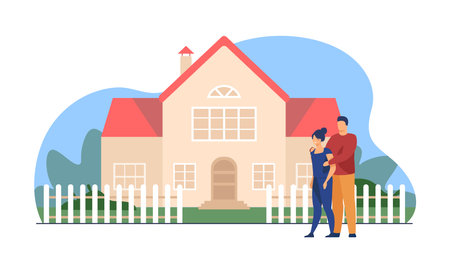1. Maximizing Natural Light
One of the most effective ways to make a small home feel larger is by maximizing natural light. Natural sunlight creates an open, airy atmosphere that can instantly brighten up compact spaces and make them feel more inviting.
Use Light Curtains
Swap out heavy drapes for sheer or light-colored curtains. These allow sunlight to filter through while still offering privacy. Avoid dark fabrics as they tend to absorb light and make rooms feel smaller.
Add Mirrors Strategically
Mirrors are a classic trick in home staging, especially in smaller homes. Placing mirrors across from windows helps reflect natural light throughout the room, enhancing brightness and giving the illusion of more space.
Mirror Placement Tips:
| Room | Ideal Mirror Placement |
|---|---|
| Living Room | Opposite a large window or above a console table |
| Bedroom | Behind nightstands or across from a window |
| Entryway | Above a bench or console to reflect hallway light |
Incorporate Reflective Surfaces
Besides mirrors, consider furniture and decor with glossy finishes or metallic accents. Items like glass coffee tables, chrome lamps, and high-gloss cabinets help bounce light around the room, making it feel more open.
Examples of Reflective Elements:
- Glass tabletops
- Metallic-framed wall art
- Lacquered cabinets or sideboards
- Chrome or brass light fixtures
By thoughtfully using natural light and reflective elements, you can dramatically improve the perceived size and comfort of any compact home.
2. Choosing the Right Furniture
When staging a compact home, furniture selection plays a huge role in making the space feel open, functional, and inviting. The key is to choose pieces that save space, serve multiple purposes, and visually lighten the room. In smaller homes across the U.S., these strategies are commonly used to help potential buyers see the full potential of the space without feeling cramped.
Smart Furniture Choices for Small Spaces
Opt for furniture that fits the scale of your rooms. Oversized sofas or bulky coffee tables can make a room feel tighter than it really is. Instead, go for sleek and streamlined designs that complement rather than overwhelm the area.
Popular Multi-Functional Furniture Options
| Furniture Type | Functionality | Why It Works for Staging |
|---|---|---|
| Sleeper Sofa | Sofa by day, bed by night | Adds sleeping options without needing a guest room |
| Storage Ottoman | Coffee table + hidden storage | Cuts clutter while keeping essentials close |
| Nesting Tables | Tuck away when not in use | Saves floor space and adds flexibility |
| Wall-Mounted Desks | Create a work zone without using floor space | Makes use of vertical space and appeals to remote workers |
| Ladder Shelves | Slim profile storage/display unit | Adds height and style without bulkiness |
Tips for Selecting the Best Pieces
- Avoid heavy wood finishes: Lighter tones or glass-top furniture make rooms feel more open.
- Select open-legged items: Furniture with visible legs creates an airy feel and avoids visual clutter.
- Prioritize dual-purpose items: Benches with storage or foldable dining tables are practical and stylish.
- Edit ruthlessly: Less is more—too much furniture, even if functional, can still make a small home feel crowded.
Create Flow Through Consistency
A consistent furniture style across your home helps create visual flow, which makes small spaces feel larger. Stick to a neutral palette with occasional pops of color through pillows or art to keep things cohesive but interesting.
The right furniture choices can dramatically improve how a compact home looks and feels during showings. By focusing on space-saving designs and multifunctional features, you help buyers envision themselves living comfortably—even in limited square footage.

3. Implementing Strategic Décor
When staging a compact home, every decorative choice matters. Strategic décor can visually expand your space and make it more inviting to potential buyers. The key is to embrace minimalism and be intentional with what you display.
Keep It Simple and Intentional
Less really is more when working with small spaces. Choose a few standout pieces rather than filling the room with multiple items. This helps keep the space looking open and clean.
Smart Wall Art Placement
Wall art should enhance the space, not overpower it. Hang artwork at eye level and avoid cluttering the walls. One large piece above a sofa or bed can create a focal point without making the room feel busy.
Use Rugs to Define Areas
Rugs are great for defining separate areas within an open layout or studio apartment. Opt for light-colored rugs with simple patterns to maintain an airy feel. Make sure the rug is proportional to the furniture—too small and it looks awkward; too large and it overwhelms the space.
| Room | Recommended Rug Size | Tip |
|---|---|---|
| Living Room | 5 x 8 or 6 x 9 | Place front legs of furniture on the rug to anchor the space |
| Bedroom | 6 x 9 under queen bed | Extend rug beyond sides of the bed for balance |
| Dining Area | At least 8 x 10 | Ensure chairs stay on rug even when pulled out |
Add Greenery Without Clutter
A few well-placed plants can bring life into a small home. Choose tall, slim plants for corners or hang small planters near windows. Avoid placing too many on surfaces like tables or countertops to maintain a tidy look.
Quick Décor Dos and Donts for Small Spaces
| Do | Dont |
|---|---|
| Select neutral colors to keep rooms feeling open | Avoid dark or overly bold colors that shrink space visually |
| Use mirrors to reflect light and add depth | Avoid over-decorating with bulky furniture or accessories |
| Highlight natural light with sheer curtains or blinds | Dont block windows with heavy drapes or large furniture pieces |
A thoughtful approach to décor helps maximize perceived space, keeps things functional, and allows potential buyers to imagine themselves living comfortably in your home.
4. Creating Flexible Living Areas
In compact homes, every square foot counts. That’s why staging multi-functional living areas is a smart way to show buyers how a small space can work for their everyday needs. Whether its combining a home office with a guest bedroom or turning a dining nook into a workspace, flexibility is key. Here’s how you can stage these spaces effectively while keeping everything stylish and cohesive.
Showcasing Multi-Use Rooms
Potential buyers love seeing how one room can serve multiple purposes. When staging, clearly define each function without making the space feel cluttered. For example, in a guest room that doubles as a home office, use a sleek desk and compact storage solutions that don’t overwhelm the room. Add a pull-out sofa or daybed instead of a bulky bed to save space and provide sleeping arrangements.
Tips for Creating Functional Dual-Purpose Spaces:
| Room Type | Function 1 | Function 2 | Staging Tips |
|---|---|---|---|
| Guest Bedroom + Home Office | Sleeping Area | Workstation | Use a daybed or sleeper sofa; add floating shelves for office supplies; choose neutral tones to unify both functions. |
| Living Room + Dining Area | Lounge Space | Dine/Entertain | Add a small round table with stackable chairs; use rugs to visually divide zones. |
| Entryway + Storage Nook | Shoe/Coat Drop Zone | Mini Mudroom or Pantry Extension | Add hooks and slim benches with hidden storage; keep it tidy and minimal. |
Create Clear Zones Without Walls
You don’t need walls to separate spaces — visual cues can do the job just as well. Use area rugs, lighting, and furniture placement to define each zone. For instance, placing an area rug under your desk in the office corner helps set it apart from the rest of the guest room. Floor lamps or pendant lights can also help give each area its own identity.
Aesthetic Consistency Matters
No matter how many functions your space serves, make sure everything ties together visually. Stick to a consistent color palette and style throughout the room. This creates harmony and prevents the space from feeling chaotic. Choose multi-purpose furniture in matching finishes and complementary fabrics to maintain flow.
Pro Tip:
If youre working with limited natural light, use mirrors strategically to bounce light around and open up the space visually.
5. Enhancing Curb Appeal for Small Homes
First impressions matter—especially when it comes to selling a small home. Curb appeal is what draws buyers in before they even step through the door. For compact properties, every detail counts. Here’s how to maximize your exterior space and boost that all-important first impression.
Focus on the Front Door
Your front door is the focal point of your home’s exterior. Make sure it’s clean, freshly painted, and has modern hardware. Bold colors like navy blue, forest green, or classic red can make your entrance pop without overwhelming the space.
Front Door Quick Tips:
| Task | Impact |
|---|---|
| Repaint front door | Adds color and freshness instantly |
| Update door hardware | Makes entryway look modern and secure |
| Add a welcome mat | Adds warmth and character |
Tidy Up Landscaping
You don’t need a huge yard to make an impact. Keep things neat and intentional. Trim hedges, mow the lawn, and remove any weeds. Use planters or flower boxes to add pops of color and texture without taking up much room.
Landscaping Ideas for Small Yards:
- Potted Plants: Easy to maintain and movable for styling.
- Vertical Gardens: Great for maximizing space on walls or fences.
- Lawn Edging: Gives a clean, finished look with minimal effort.
Create an Inviting Entryway
A small porch can still be welcoming. Add a small bench or chair if space allows, or hang a seasonal wreath to add personality. Keep clutter away—no excessive shoes or packages near the door.
Entryway Enhancements:
| Item | Description |
|---|---|
| Slim bench or chair | Makes space feel usable and cozy |
| Potted plant or lantern | Adds charm without crowding the area |
| Crisp lighting fixture | Keeps entry well-lit and safe at night |
The Power of Lighting
A well-lit exterior makes a home feel safer and more inviting. Consider adding solar-powered path lights or updating porch lighting with energy-efficient LED fixtures. It not only looks better—it also highlights your home’s best features after sunset.
A Clean Facade Goes a Long Way
A pressure-washed driveway, cleaned siding, and sparkling windows show that the home is cared for. These simple maintenance tasks can make even older homes look newer and well-maintained.
6. Utilizing Smart Storage Solutions
When it comes to staging compact homes, smart storage solutions can make a huge difference. Buyers want to see that even a small home can still feel spacious and organized. Highlighting clever storage hacks during your home staging process helps potential buyers imagine how they can live comfortably without clutter.
Showcase Built-In Storage
Built-in shelves, benches with hidden compartments, and under-stair drawers are powerful selling points in small homes. These built-ins not only save space but also add a custom, high-end feel to the property. If your home already has them, be sure to draw attention by styling them simply—avoid overcrowding and use neutral decor elements like baskets or books.
Maximize Vertical Space
Take advantage of vertical areas by using tall bookcases, wall-mounted shelves, or hanging racks. This draws the eye upward and creates the illusion of more space. Wall hooks for coats, hats, or even kitchen utensils are easy additions that show off practical storage without taking up floor space.
Use Storage-Enhancing Staging Props
Incorporate baskets, bins, and multi-functional furniture pieces as part of your staging props. Ottomans with storage inside or beds with drawers underneath are great examples. These not only look stylish but also subtly communicate to buyers that theres room for everything—even in a smaller footprint.
Examples of Smart Storage Ideas
| Storage Solution | Description |
|---|---|
| Under-Bed Drawers | Utilize the space beneath beds for seasonal clothing or linens. |
| Slim Entryway Cabinets | Add narrow cabinets near entrances for shoes and keys without crowding the space. |
| Floating Shelves | Create open display areas in kitchens, bathrooms, or living rooms without bulky furniture. |
| Multi-Functional Furniture | Coffee tables or ottomans that open up for extra storage space. |
Quick Tip:
If youre short on time or budget, even simple changes like organizing closets with matching bins or decluttering countertops can dramatically improve how spacious and functional your home appears to potential buyers.


